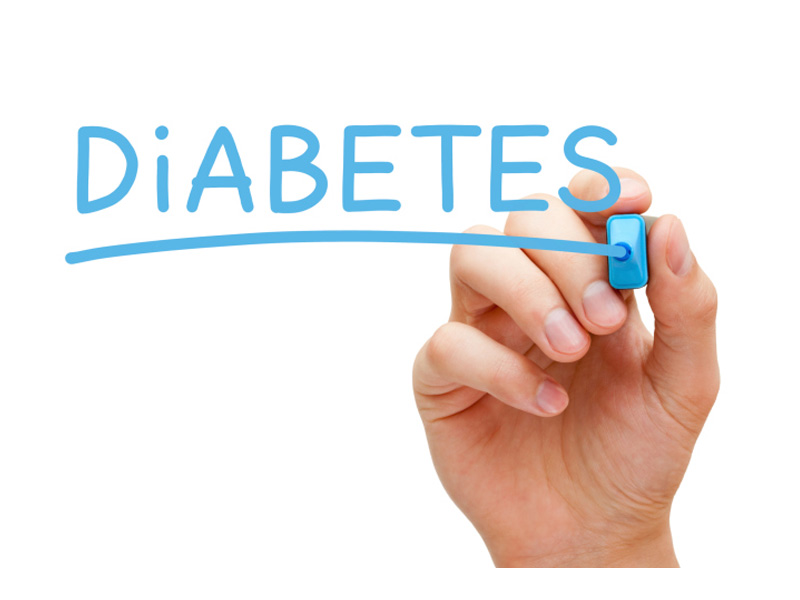 WHAT IS DIABETES:
WHAT IS DIABETES:
Diabetes is a condition which occurs when our body cannot use blood glucose properly. After we eat, various foods are broken down into sugars (main sugar is glucose) in the gut (intestine). Our bodies use glucose in the blood for energy. Insulin is a natural hormone that is required for our body to utilize glucose. Insulin is secreted from pancreas and it functions like a key, unlocking the cells and enabling glucose to enter the cells. When insulin levels are insufficient or when our body becomes resistant to the action of insulin, blood glucose levels rises and this condition is called Diabetes Mellitus.
If this is not treated properly, it can lead to complications over time that can make you go blind, have a heart attack or stroke, or even have an amputation. Diabetes cannot be cured, but you can keep it under control by proper treatment and reduce the risk of complications.
TYPES OF DIABETES:
There are three main types of diabetes, apart from many other rarer types of diabetes.
- Type 1 diabetes: This predominantly occurs in young individuals and children and is often referred to as Juvenile Diabetes. Usually patients are young and lean. It is an autoimmune disease in which the body destroys insulin- producing beta cells in the pancreas. One needs to be treated with insulin injections every day.
- Type 2 diabetes: This predominantly occurs in older individuals and obese people. However it is now increasingly seen in young individuals as well due to poor dietary habits and sedentary lifestyle. This is usually treated with tablets, insulin or both.
- Gestational diabetes: Pregnant women who have never had diabetes before but who have high blood glucose levels during pregnancy are said to have gestational diabetes. This is treated with either Metformin tablet or Insulin or both.
There are other rarer types of diabetes such as secondary diabetes (seen in chronic pancreatitis, Cushing’s syndrome, Acromegaly etc), LADA (Latent Autoimmune Diabetes of Adults), MODY (Maturity Onset Diabetes of the Young), NODAT (New Onset Diabetes After Transplant) and genetic conditions associated with diabetes such as Wolfram’s syndrome and Friedreich’s ataxia.
SYMPTOMS OF DIABETES:
In early stages, most patients do not have any symptoms. As the blood glucose rises and becomes high, patients can have a number of symptoms such as hunger, thirst, tiredness, blurred eyesight, tingling in the feet, losing weight without trying to do so, wounds taking more time to heal and urinating often especially at night.
HOW TO DIAGNOSE DIABETES:
The only way to diagnose diabetes is by a blood test to check the level of glucose in your blood. If this is high it confirms you have diabetes whether symptoms are present or not. Some people have to have two samples of blood taken with glucose ingestion between the two samples (GTT). Nowadays a blood test called HbA1c is also used to diagnose diabetes apart from it giving us an idea about how good or bad your diabetes control is for the last 3 months.
COMPLICATIONS OF DIABETES:
If the blood glucose level is higher than normal, it can make you prone to get infections such as urinary tract infection or thrush. If it is high over a long period of time, it can have a damaging effect on almost all organs in the body. However the most commonly affected are:
- Heart and Brain: Heart attacks and Stroke. Tests such as ECG, ECHO, and TMT etc are done to detect complications earlier
- Eyes: Cataracts, Glaucoma and Retina damage (retinopathy). Simple eye examination and retinal photography are done to detect changes in the eye at early stages
- Kidneys: Kidney failure. Urine test (microalbuminuria) and blood tests are done to detect kidney damage early
- Feet: Nerve damage and Poor circulation. Foot examination, Biothesiometry, ABPI and Doppler scans can detect changes in the feet early to prevent complications
- Sexual Dysfunction: Erectile dysfunction in men; Dry vagina, yeast infections and loss of sensation in women. Careful history and examination can detect sexual dysfunction early and support treatment
AIMS OF TREATMENT IN DIABETES:
Although diabetes cannot be cured, it can be controlled successfully. If a high blood glucose level is brought down to a normal or near-normal level, symptoms will ease and you are likely to feel well again. However, you still have some risk of complications in the long term if your blood glucose level remains even mildly high. People who have better glucose control have fewer complications (such as heart disease or eye problems) compared with those people who have poorer control of their glucose level. It is also very important to keep your blood pressure and blood lipid (cholesterol) levels as normal as possible.
Therefore, the main aims of treatment are:
- To keep your blood glucose level as near to normal as possible. Diabetes treatment aims to maintain glucose levels in the normal range i.e. fasting levels between 80-100 mg/dL and post prandial levels between 80-140 mg/dL in most patients. HbA1c targets are usually between 6 to 7.5% for most patients. Patients with type 1 diabetes are treated with insulin whereas patients with type 2 diabetes and gestational diabetes are treated with tablets and / or insulin
- To reduce any other risk factors that increases the risk of developing complications. In particular, blood pressure and lipids need to be kept under control.
- To support you lead a healthy lifestyle. This includes healthy diet, regular exercise, maintaining a healthy body weight and not smoking.
- To detect complications as early as possible. Treatment can prevent or delay some complications from becoming worse.
HOW TO HELP YOURSELF:
- Take your medication as prescribed
- Check your feet everyday for any loss of sensation and changes in colour or shape
- Do more exercise, such as start walking more, and build that up over time. Try to sit less
- Change your eating habits
- Lose any excess weight
- If you smoke – stop
- If your drink– stop
- Inform your doctor of any untoward or unusual symptoms
- Meet your doctor periodically as advised for check up, urine tests and blood tests
- Bring all your medications during each visit to your doctor
GESTATIONAL DIABETES:
Pregnant women who have never had diabetes before but who have high blood glucose levels during pregnancy are said to have gestational diabetes.
Gestational Diabetes is one of the common health complications in pregnant women. If not treated, it can increase the risk of health problems to the mother and fetus (large baby or baby with too low sugar at birth). Women with gestational diabetes may not notice any symptoms. So it is important to meet the doctor regularly and follow their advice. Most women with gestational diabetes have healthy pregnancies and healthy babies by following the treatment plan set up by their doctor if their sugar levels are well controlled.
Treatment for gestational diabetes includes a good diet and lifestyle plan. This includes planned meals, scheduled physical activity, regular glucose testing and medications if needed. Medications for Gestational Diabetes may be either Metformin tablets or Insulin depending on blood glucose levels.
MEDICATIONS TO CONTROL DIABETES:
Apart from dietary and lifestyle changes to control diabetes a number of medications are available to control blood sugars.
People with type 1 diabetes require insulin for controlling their diabetes. Women with gestational diabetes can be treated with Metformin, Insulin or both. People with type 2 diabetes who cannot control their blood sugars with diet and exercise alone require medications or insulin or both to control their blood sugars.
The decision about which medications are best depends on many factors, including blood sugar level and any other concurrent health problems.
Examples of possible oral treatments for type 2 diabetes include Metformin, Sulfonylureas, Meglitinides, Thiazolidinediones, DPP-4 inhibitors and SGLT2 inhibitors. Injectable therapies for diabetes include GLP-1 receptor agonists and Insulin therapy. In the past, insulin therapy was used as a last resort, but today it’s often prescribed sooner because of its benefits. Because normal digestion interferes with insulin taken by mouth, insulin must be injected. There are many types of insulin, and they each work in a different way.
HYPOGLYCEMIA:
Hypoglycemia occurs when blood glucose drops below normal levels (70 mg/dL). Hypoglycemia is not a complication of diabetes per se but a complication of treating Diabetes. This can happen despite best the treatment for diabetes.
Symptoms of hypoglycemia:
The main symptoms associated with hypoglycemia are:
Sweating, Fatigue, Dizziness, Palpitations, Hunger, Blurred vision, Confusion, Convulsions (fits), Loss of consciousness and in extreme cases coma.
Causes of hypoglycaemia:
Too high a dose of medication (usually insulin or sulphonylurea tablets), delayed or skipped meals, exercise and alcohol
Treatment of hypoglycaemia:
If the person is conscious (fully awake) and able to eat or drink then try something like a small glass of fruit juice, a small handful of sweets, or four or five dextrose tablets or a spoonful of sugar. If no improvement in 15 minutes, have it again. Following improvement in symptoms, take a slice of toast, a couple of biscuits or a glass of milk. It is important to consult with the doctor later on to discuss what could have caused the hypoglycaemia and alter medications if required.
If the person is unconscious or drowsy or comatose or having fits, then call an ambulance immediately and take him/her to the nearest hospital where he/she can be given treatment.
Always have something with you to treat low blood glucose such as ½ cup juice, 1 tablespoon honey, 3 teaspoon sugar, 3 pieces of hard candy. Monitoring your blood glucose levels regularly will tell you when your blood glucose is low and that you need to treat it.





















